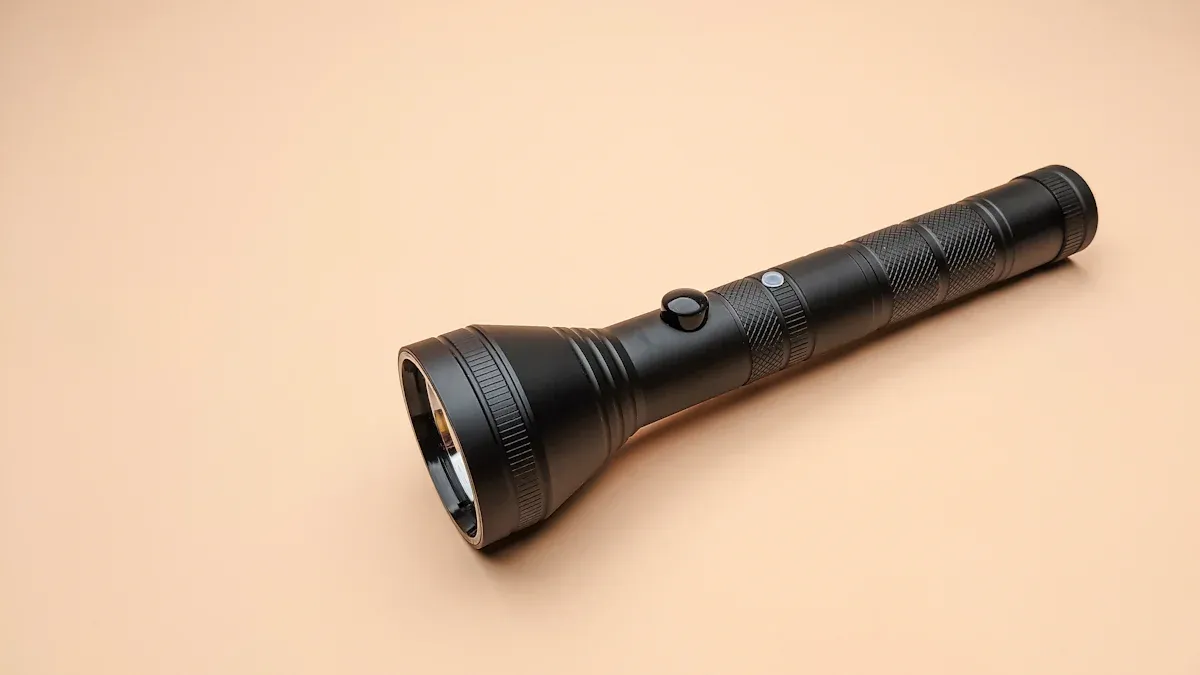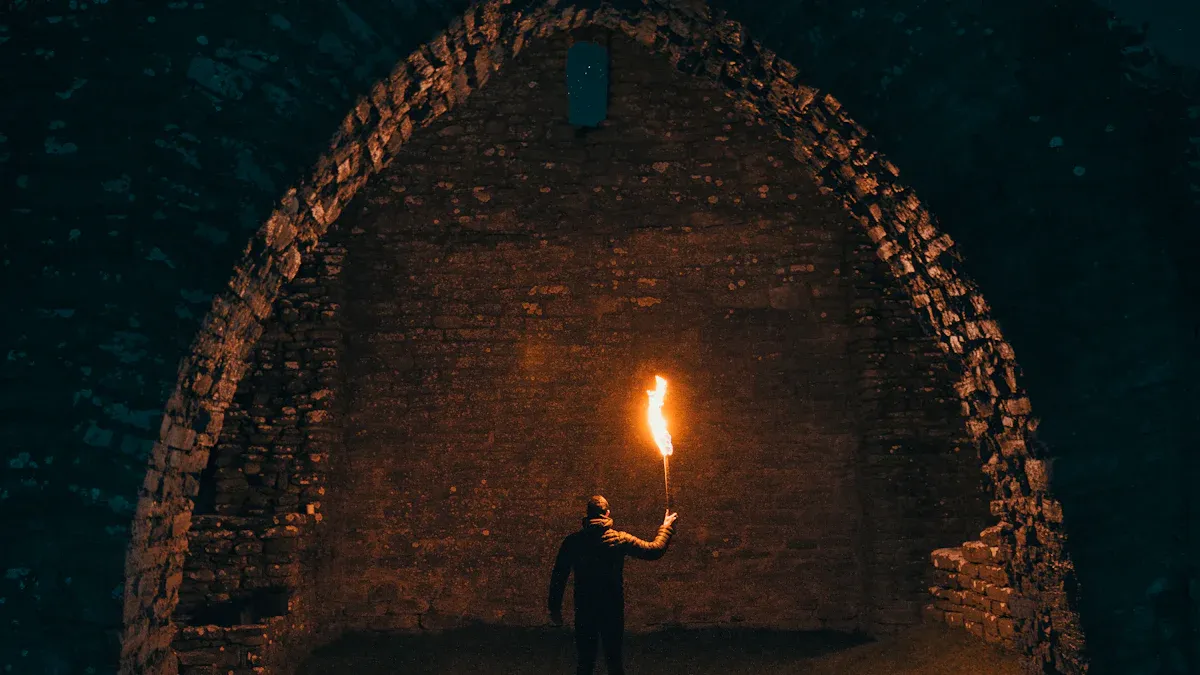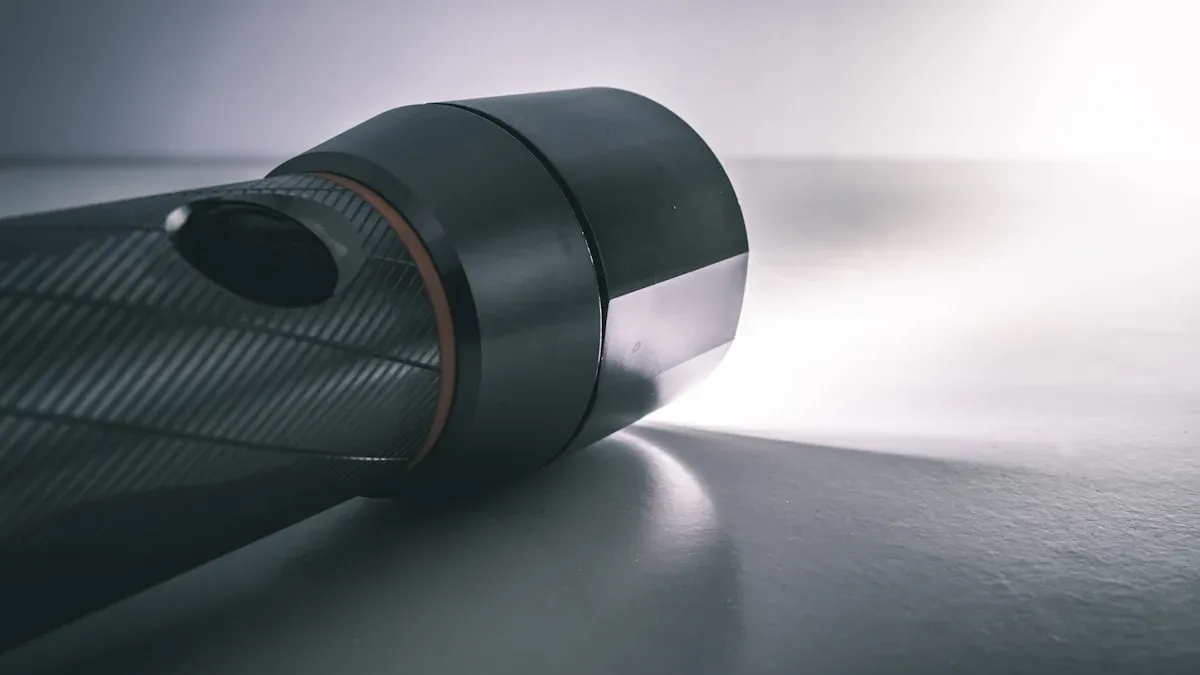Understanding Lumens: What You Need to Know Before Buying a Helius Flashlight

When you’re shopping for a flashlight, you’ll often see the term "lumens" pop up. But what does it mean? Lumens measure the total visible light a flashlight emits, directly determining its brightness. A higher lumen count means a brighter light, which can be crucial for outdoor adventures or emergencies.
Understanding lumens helps you pick the right helius flashlight for your needs. It ensures you get the brightness you want without draining the battery too quickly or sacrificing beam distance. By knowing how lumens work, you can make smarter choices and find a flashlight that fits your lifestyle perfectly.
Key Takeaways
Lumens show how bright a flashlight is. More lumens mean brighter light, useful for outdoors and emergencies.
Pick the right lumens for your needs. For daily use, 150-500 lumens work well. Outdoor trips might need 500-1000 lumens.
Think about battery life when choosing a flashlight. Flashlights with brightness settings save battery for longer use.
What Are Flashlight Lumens?

Definition and significance of lumens in flashlights
Lumens are a way to measure the total visible light a flashlight produces. Think of it as the "brightness score" for your flashlight. The higher the lumen output, the brighter the light. Technically, lumens measure the total light emitted in all directions, and this is determined using a tool called an integrating sphere. However, this measurement doesn’t always reflect how focused or far-reaching the beam is.
Why are lumens important? They help you figure out if a flashlight is right for your needs. For example, a flashlight with a high lumen rating is perfect for outdoor adventures or dark environments. On the other hand, lower lumens work well for everyday tasks like finding your keys in the dark. Your personal preferences and the environment you’re in play a big role in choosing the right brightness.
How lumens measure brightness and their impact on performance
Lumens directly correlate with how bright a flashlight is. Here’s what you need to know:
Lumens measure the total visible light emitted by the flashlight.
A higher number of lumens means a brighter flashlight.
The right lumen output ensures you get the illumination you need for specific tasks.
The brightness you see also depends on the flashlight’s lens or reflector. A flashlight with fewer lumens but a focused beam can appear brighter than one with more lumens but a wider beam.
Understanding this helps you pick a flashlight that balances brightness, beam distance, and usability.
Common misconceptions about flashlight lumens
Many people think higher wattage equals brighter light. This belief comes from older incandescent bulbs, but it doesn’t apply to modern flashlights. Instead, focus on the lumen rating to determine brightness. Another misconception is that more lumens always mean better performance. While high lumens are great for brightness, they can drain the battery faster or create unnecessary glare in close-range tasks. Knowing this helps you make smarter choices when shopping for a flashlight.
How Lumens Affect Helius Flashlight Performance
Brightness levels and their practical applications
The brightness of a flashlight, measured in lumens, determines how well it performs in different situations. For everyday tasks like walking your dog or finding something in a dark room, a flashlight with 100-400 lumens is usually enough. If you're heading outdoors for activities like hiking or camping, higher brightness levels improve safety and visibility. For search and rescue missions or tactical operations, a flashlight with a higher lumen output is essential.
Many Helius flashlights come with adjustable brightness settings. This feature is incredibly useful for conserving battery life during extended use, such as on long backpacking trips. It also minimizes glare and eye strain, making it more comfortable to use in dimly lit environments. Some models even include SOS signals, which can be lifesaving in an emergency.
The relationship between lumens and battery life
When choosing a flashlight, you need to consider how lumen output affects battery life. Flashlights with higher lumen outputs provide brighter light but tend to drain batteries faster. For example, a flashlight set to 1000 lumens will use more power than one set to 400 lumens. If you need long battery life, look for models with adjustable brightness levels. This way, you can switch to a lower setting when you don’t need maximum brightness, extending the flashlight's runtime.
How lumens influence beam distance and light distribution
Lumens also play a big role in determining how far a flashlight beam can reach. A flashlight with a higher lumen output will generally have a longer beam distance. For example, a flashlight with 1000 lumens can illuminate objects up to 350 meters away, while one with 400 lumens might only reach 200 meters. Here's a quick comparison:
Lumens | Distance | Best For |
|---|---|---|
400–1000 | Up to 200m | Hiking, backpacking, caving |
1000–30000 | Up to 350m | Fishing, hunting, rock climbing |
The beam's shape and distribution also depend on the flashlight's lens or reflector. Some flashlights focus the light into a narrow, long-reaching beam, while others spread it out for a wider field of view. When purchasing a flashlight, think about whether you need a focused beam for long distances or a broader beam for close-range tasks.
Choosing the Right Lumen Level for Your Helius Flashlight

Factors to consider: intended use, environment, and personal preferences
When choosing the right lumen level for your helius flashlight, you need to think about a few key factors. First, consider the intended use. Are you planning to use it for outdoor activities like hiking or camping? Or do you need it for emergency preparedness at home? Each scenario requires a different level of brightness.
Next, think about the environment. If you’re in a low-light area, a higher lumen output might be necessary. On the other hand, well-lit spaces don’t demand as much brightness. Finally, your personal preferences matter too. Some people prefer a compact flashlight with moderate brightness, while others want maximum power for long-range visibility.
Tip: Always match the flashlight’s lumen rating to your specific needs to avoid overpaying for features you won’t use.
Common lumen ranges and their applications
Flashlights come in various lumen ranges, each suited for specific tasks. Here’s a quick breakdown:
Lumen Range | Applications |
|---|---|
100 - 400 Lumens | Everyday carry, emergency preparedness, camping, and fishing. |
400 - 1000 Lumens | Hiking, backpacking, law enforcement, and construction work. |
1000 - 3000 Lumens | Search and rescue, advanced camping, and hunting. |
3000 - 7000 Lumens | Firefighting, emergency rescue, and military operations. |
7000 - 25000 Lumens | Extreme outdoor conditions, seafaring vessels, and professional rescue squads. |
For most users, 150-500 lumens are ideal for everyday use, while 500+ lumens are best for outdoors or emergency rescue situations.
Tips for balancing brightness, battery life, and portability
Balancing brightness, battery life, and portability is crucial when purchasing a flashlight. Here’s what to look for:
Choose a compact flashlight with adjustable beam settings. This lets you switch between brightness levels based on your needs.
Opt for rechargeable batteries. They’re eco-friendly and provide long battery life, especially for outdoor adventures.
Look for flashlights with power-saving modes. These features help conserve battery life during extended use.
Note: Compact designs with water resistance and durability in outdoor environments are perfect for both everyday use and emergencies.
By keeping these tips in mind, you’ll find a helius flashlight that meets your needs without compromising on performance or portability.
Understanding lumens is key to choosing the right flashlight for your needs. It helps you match brightness to specific tasks, whether it’s for everyday use, outdoor adventures, or an emergency. Think about how you’ll use the flashlight, the environment, and your personal preferences. For camping, 500-1000 lumens work well, while hiking may only need 200-400 lumens. Balancing brightness, battery life, and durability ensures you get the best performance without compromise. Take your time to evaluate what matters most to you, and you’ll find a Helius flashlight that fits perfectly into your lifestyle.
FAQ
What does "lumens" mean when buying a flashlight?
Lumens measure how bright a flashlight is. Higher lumens mean more brightness, but they can also drain the battery faster.
How many lumens do I need for everyday use?
For everyday tasks, 150-500 lumens work well. This range provides enough brightness without being overwhelming or draining the battery too quickly.
Can a flashlight with high lumens last long?
Yes, if it has adjustable brightness settings. Lowering the lumens when full brightness isn’t needed helps extend battery life.
See Also
Understanding Flashlight Lumens For Optimal Brightness Selection
In-Depth Review Of The Heliusworld Flashlight Model
Top Reasons To Select Helius Flashlight For EDC
